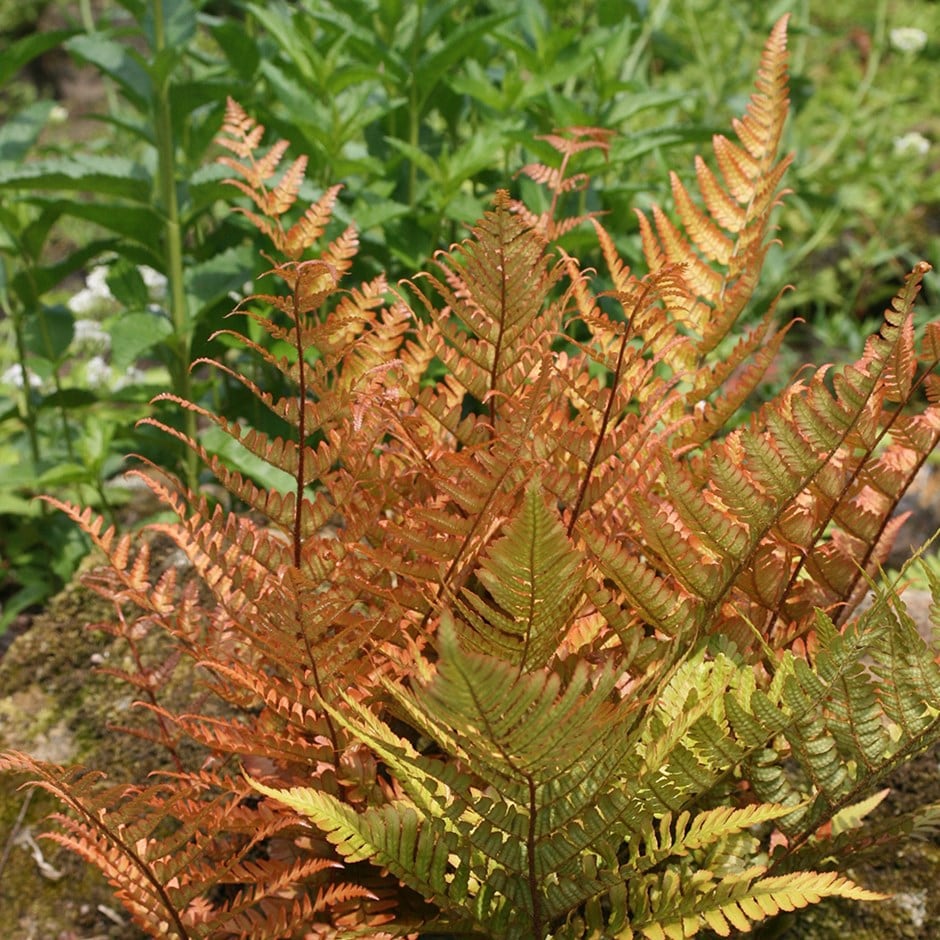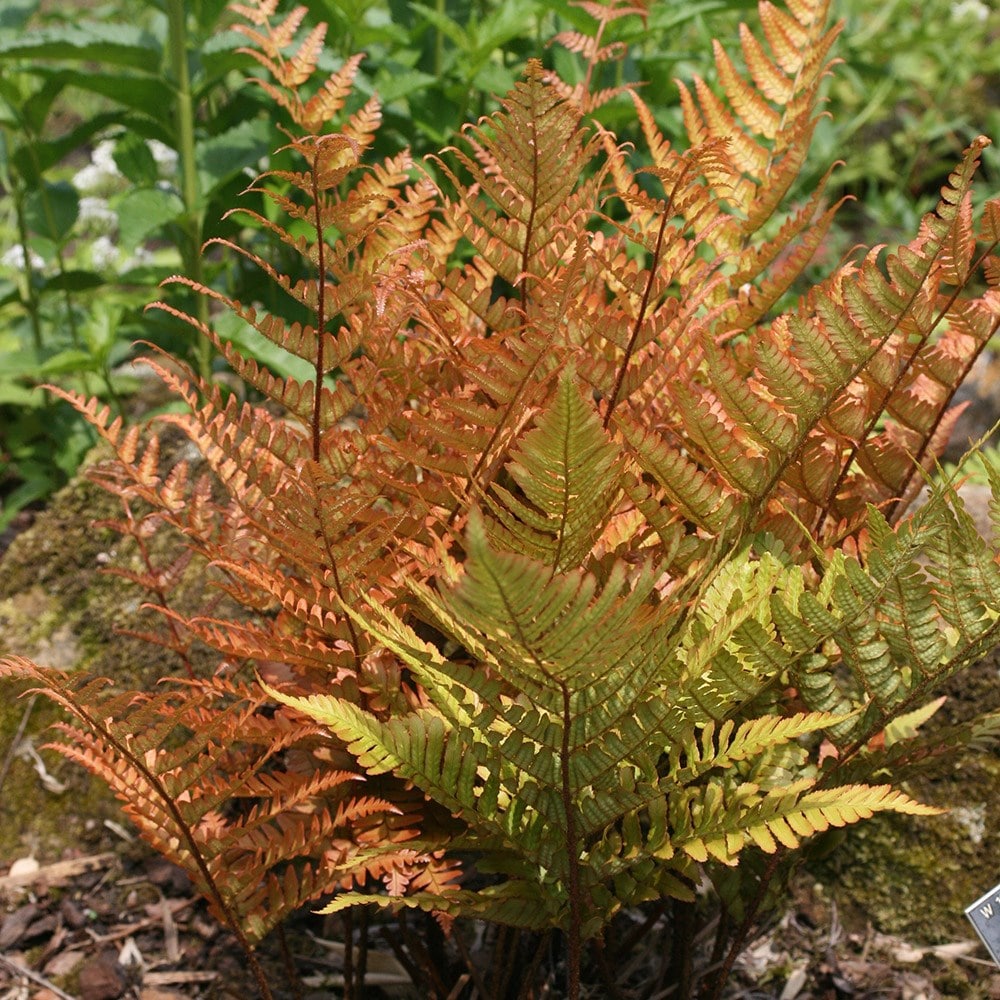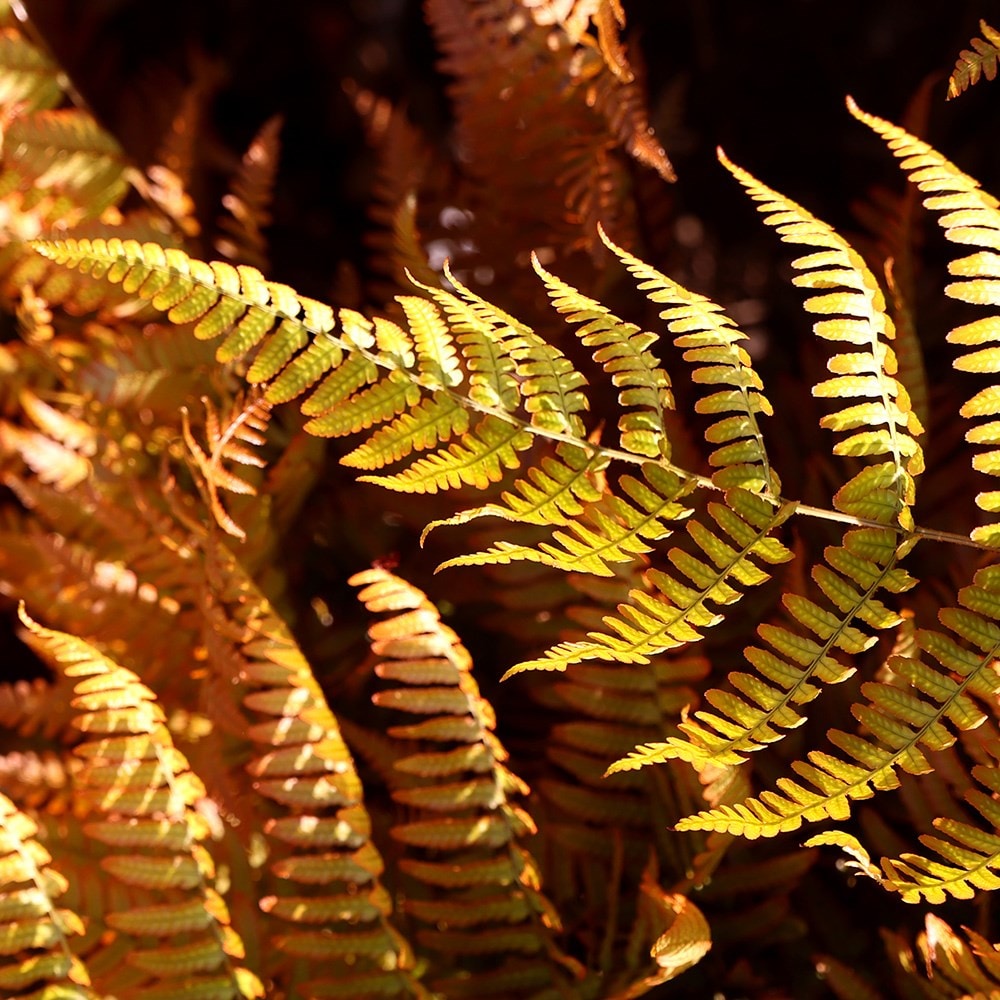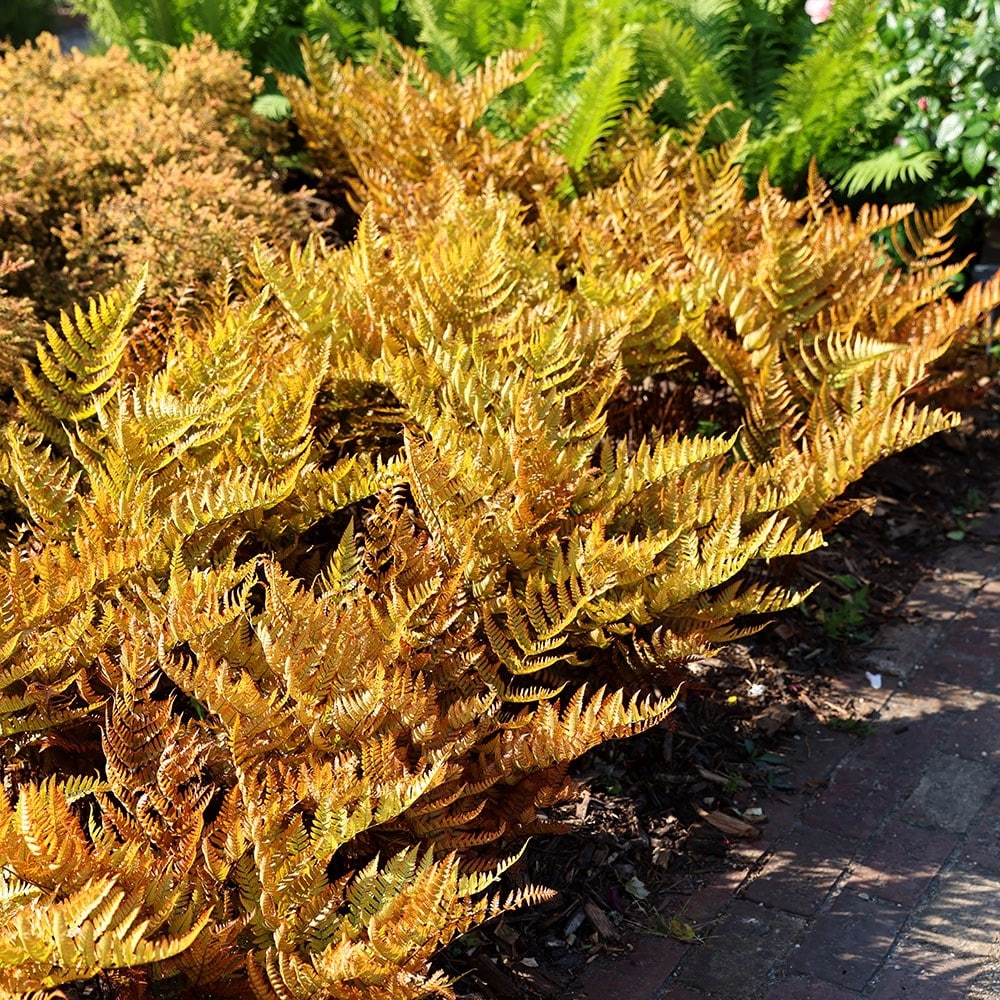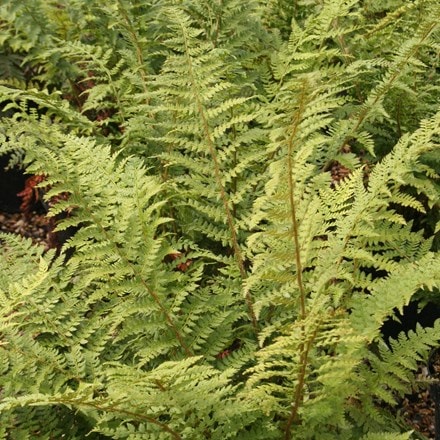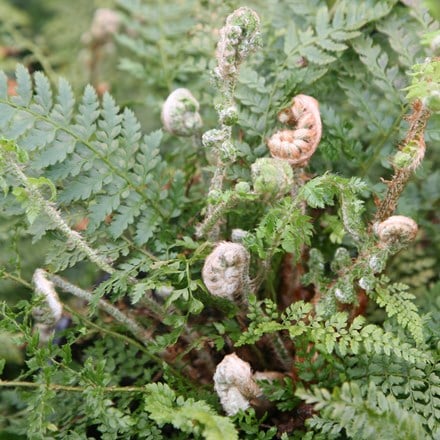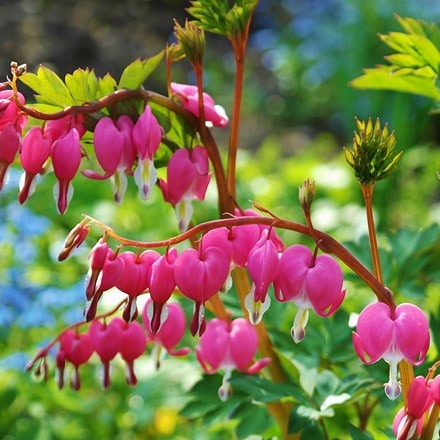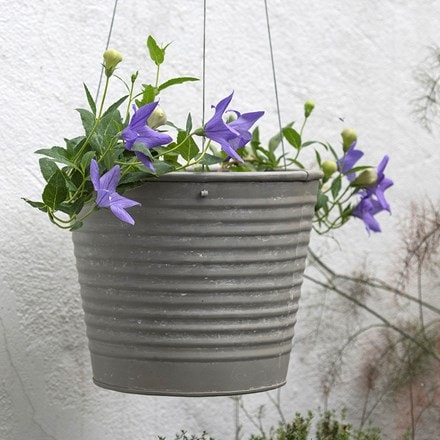Dryopteris erythrosora
buckler fern
This striking deciduous fern has triangular-shaped fronds, which are coppery-red when young and slowly mature to dark green....
The autumn fern has a russet-red underside to its leaves but it’s still pristine enough to flatter snowdrops in early winter- before its new red-backed fronds appear
GOES WELL WITH
Jungle
The trick to achieving the tropical effect is good preparation and dense planting, vivid foliage, fiery flowers and striking contrasts. The jungle garden is a place for theatrical planning and planting. If you don't have room or the inclination to turn y
Read full articleWater garden
Who can resist the allure of water in the garden? The gentle gurgle of a running stream creates a sense of calm and tranquillity, while a simple pond makes a focal point with magnetic appeal. You can create lush and natural-looking planting to show off th
Read full article


